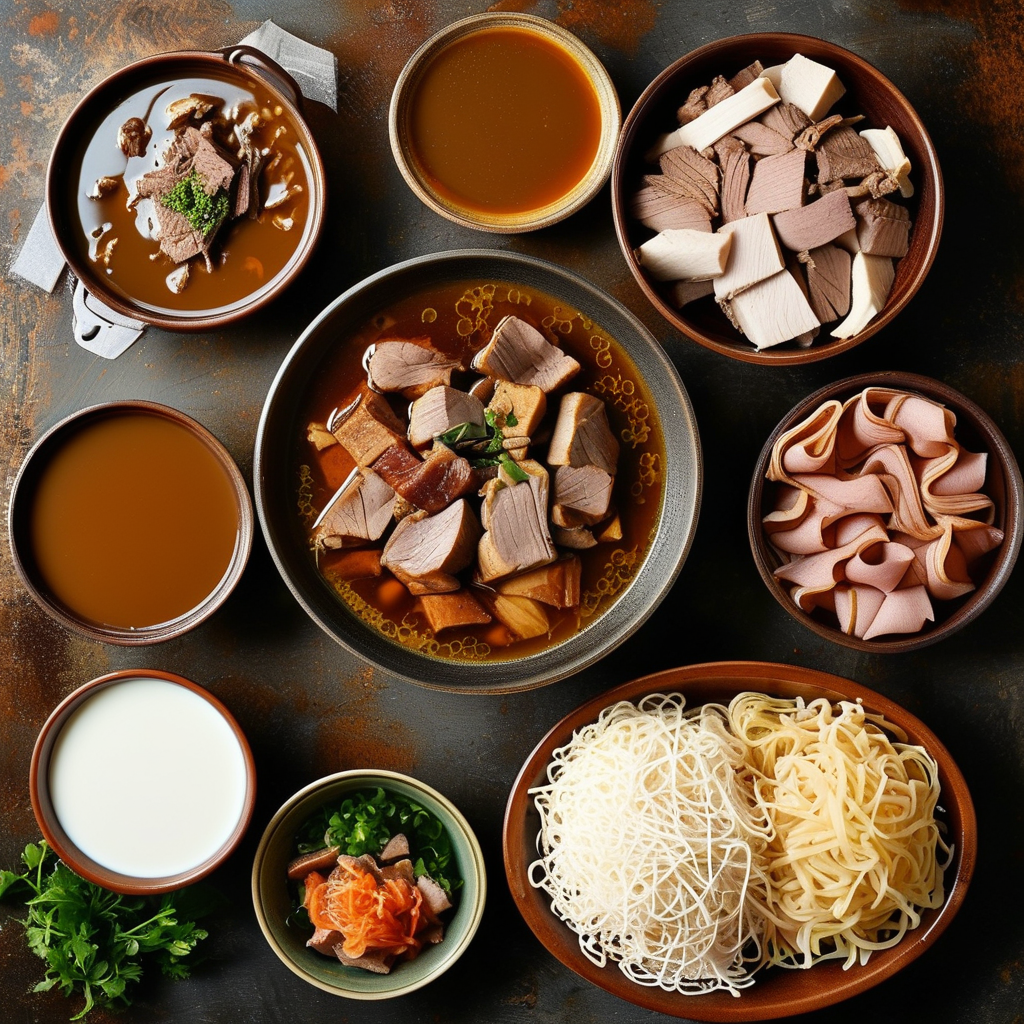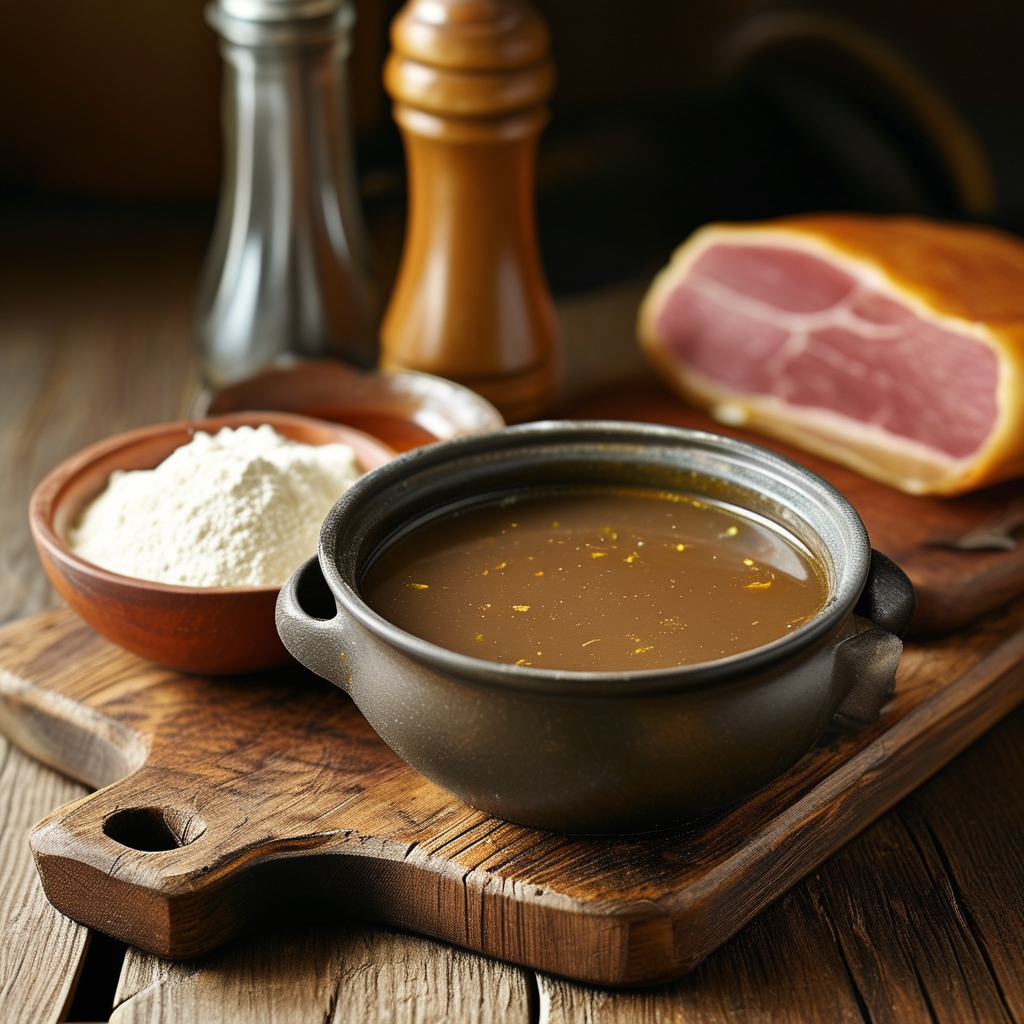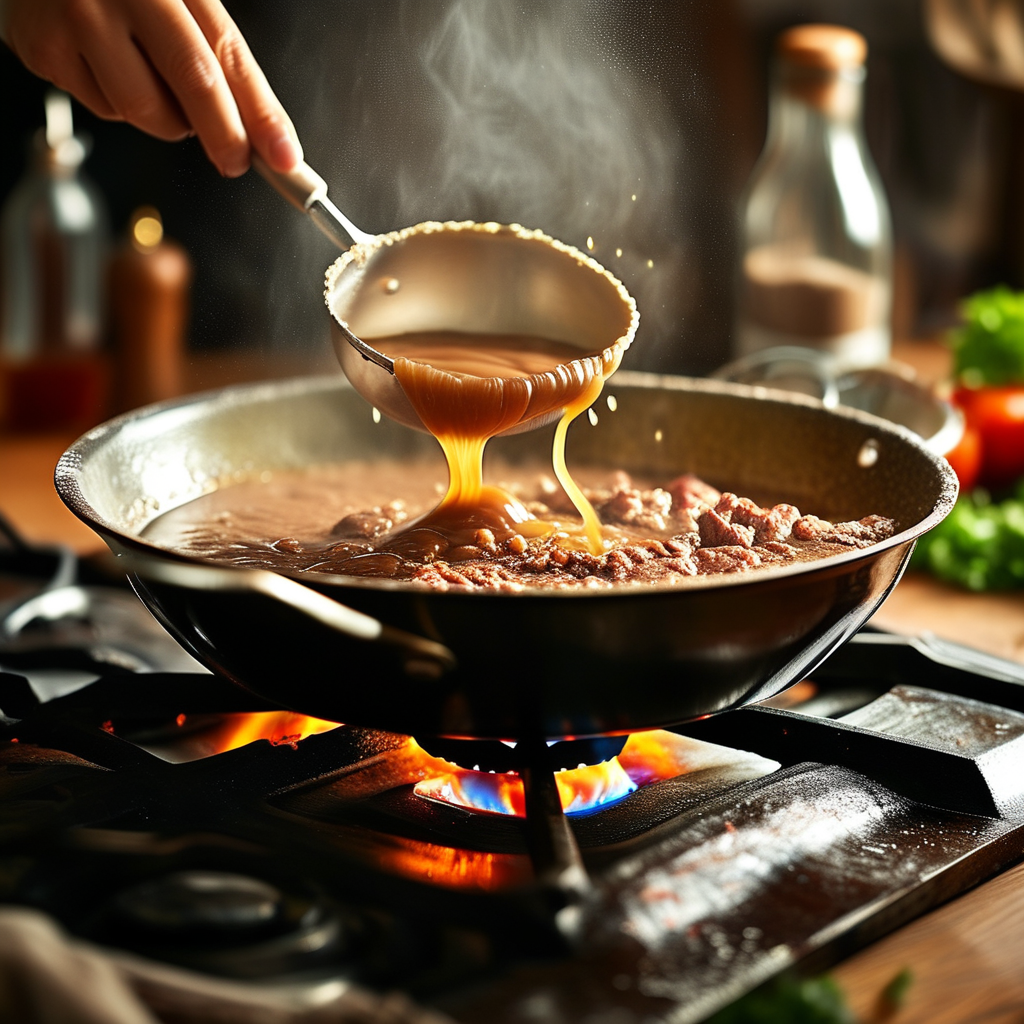What is the Difference Between Brown Gravy and White Gravy
Are you wondering what is the difference between brown gravy and white gravy? Gravy is a fundamental component in various cuisines, adding flavor, moisture, and richness to many dishes. Its versatility makes it a staple in both comfort food and gourmet meals alike. Understanding this difference can significantly enhance your culinary prowess. This knowledge allows you to perfectly complement your dishes, whether you’re preparing a hearty meal for family or experimenting with new recipes. By distinguishing between these two types of gravy, you can elevate your comfort food creations to a new level of deliciousness. In this comprehensive guide, we will delve deeper into the distinct characteristics, diverse preparation methods, and rich cultural significance of these two beloved gravies. Additionally, we’ll explore how each gravy type interacts with various ingredients, ensuring that your meals are both flavorful and satisfying.

Both types of gravy play critical roles in traditional meals across different regions. They not only enhance the taste of dishes but also add a comforting texture that binds various components together. For an extensive collection of recipes that utilize gravy, visit this pasta bake recipe to see how gravies complement various dishes. Additionally, if you’re curious about cooking techniques, check out this guide on pan-searing salmon for tips that can enhance your gravies, adapting flavors to fit diverse culinary needs. By exploring these resources, you can gain a better understanding of how to incorporate gravy into a wide range of meals, making your cooking more dynamic and versatile.
Understanding Gravy
What is Gravy?
Gravy is a savory sauce made from the juices that naturally run from meat during cooking. Often thickened with a starch such as flour or cornstarch, it serves as a flavor enhancer, enriching the overall dining experience. Historically, gravy can be traced back to ancient culinary traditions where it was used to make dishes more palatable and to add moisture to otherwise dry meats. Over time, gravy has evolved to include a variety of recipes and techniques, each bringing its unique twist to this classic staple. Whether drizzled over roasted meats, mashed potatoes, or vegetables, gravy remains an essential element in enhancing the taste and texture of many dishes.
Types of Gravy
Gravy comes in various forms, each bringing its unique flavor profile and suitable for different types of dishes. Some of the most popular types include:
- Demi-glace
- Sausage gravy
- Brown gravy
- White gravy
Each type of gravy has its own set of ingredients and preparation methods, reflecting regional preferences and culinary traditions. Regional variations also exist, each with unique characteristics and cultural significance. For instance, Southern cuisine in the United States has its distinct approaches to both brown and white gravy, while other cultures may incorporate different herbs, spices, and base ingredients to create their versions of gravy. Understanding these variations can help you appreciate the versatility of gravy and how it adapts to different culinary contexts.
Brown Gravy

Definition and Characteristics
Brown gravy is renowned for its rich, savory flavor and deep, appealing color. It is typically made from the drippings of roasted or pan-fried meats, which provide a robust and hearty taste. The use of meat drippings gives brown gravy a complex flavor profile, often enhanced with herbs and seasonings. Its dark color makes it a visually appealing addition to dishes, providing a striking contrast to lighter ingredients like mashed potatoes or vegetables. Brown gravy’s depth of flavor makes it an excellent accompaniment to a wide range of dishes, from traditional Sunday roasts to everyday family dinners.
Ingredients and Preparation
The common ingredients in brown gravy include:
- Meat drippings
- Flour
- Broth
To prepare brown gravy, follow these steps:
- Collect the flavorful meat drippings from your cooking pan after roasting or frying meat.
- Whisk in flour over medium heat until the mixture achieves a golden brown color, forming a roux that will act as the thickening agent.
- Gradually add broth to the roux, whisking continuously to prevent lumps and ensure a smooth consistency.
- Allow the gravy to simmer until it reaches the desired thickness, stirring occasionally to maintain a consistent texture.
For added depth, you can incorporate additional ingredients such as onions, garlic, or herbs like thyme and rosemary. Some recipes also call for a splash of red wine or Worcestershire sauce to enhance the gravy’s complexity. The key to a perfect brown gravy is patience and careful stirring, ensuring that each component melds together harmoniously to create a rich and satisfying sauce.

Popular Dishes Featuring Brown Gravy
Brown gravy pairs wonderfully with a variety of dishes, enhancing their flavors and adding a comforting richness. Some popular pairings include:
- Mashed potatoes
- Meatloaf
- Biscuits
- Roast turkey or chicken
- Steak and other grilled meats
- Sauces for roasted vegetables
These pairings showcase brown gravy’s versatility, making it an essential addition to both traditional and modern recipes. Whether you’re preparing a holiday feast or a simple weeknight dinner, brown gravy can elevate your meal, providing a delightful balance of flavors that satisfy the palate.
White Gravy

Definition and Characteristics
White gravy, also known as cream gravy or country gravy, is celebrated for its creamy and smooth texture. Unlike brown gravy, it is typically made from milk or cream, resulting in a lighter color and a milder flavor. White gravy often incorporates butter and seasoned with spices like black pepper and herbs, giving it a subtle yet flavorful profile. Its creamy consistency makes it a versatile addition to various dishes, providing a luscious coating that enhances both savory and sweet ingredients. The simplicity of white gravy allows it to complement a wide range of foods without overpowering their natural flavors.
Ingredients and Preparation
The common ingredients for white gravy often include:
- Milk
- Flour
- Butter
- Sausage
To create white gravy, follow these steps:
- Start by preparing a roux: melt butter in a skillet or saucepan over medium heat, then whisk in the flour to form a smooth mixture.
- Continue to cook the roux, stirring frequently, until it reaches a golden blonde color, ensuring no lumps remain.
- Gradually add milk to the roux, whisking constantly to maintain a smooth consistency and prevent clumping.
- Season the gravy with salt, black pepper, and any additional spices or herbs to taste, adjusting the seasoning to achieve the desired flavor profile.
- For added richness, you can incorporate cooked sausage or bits of bacon, stirring them into the gravy to infuse it with a savory depth.
White gravy is best when served hot, as it thickens slightly upon standing. For a thinner consistency, simply add more milk, and for a thicker gravy, reduce the amount of liquid or extend the cooking time. This adaptability makes white gravy a favorite in many households, particularly for breakfast dishes and comfort meals.
Popular Dishes Featuring White Gravy
White gravy is often associated with hearty, comforting dishes that benefit from its creamy texture and mild flavor. Some of the most popular pairings include:
- Chicken-fried steak
- Biscuits
- Eggs and bacon
- Pancakes and waffles
- Breakfast casseroles
- Grilled chicken or pork chops
These pairings highlight white gravy’s ability to enhance both breakfast and savory meals, adding a creamy richness that ties the dish together. Its versatility makes it a staple in Southern cuisine and a beloved comfort food option for many families.

Key Differences Between Brown Gravy and White Gravy
Ingredients
The primary difference between brown gravy and white gravy lies in the ingredients used, which significantly affect their flavor and texture:
- Brown gravy uses meat drippings, creating a robust and savory flavor profile. The inclusion of broth and sometimes red wine adds depth and complexity to the gravy.
- White gravy incorporates milk or cream, resulting in a creamy and mild taste. The addition of butter and flour forms a smooth base that is often enriched with sausage or other savory elements.
These differing ingredients not only influence the taste but also determine how each gravy interacts with various dishes. Brown gravy’s hearty flavor makes it ideal for richer, meat-based dishes, while white gravy’s creaminess pairs well with lighter or breakfast-oriented foods. Understanding what is the difference between brown gravy and white gravy helps you make informed choices in your cooking, ensuring that each meal is perfectly complemented by the right type of gravy.
Cooking Techniques
The methods of preparation for brown gravy and white gravy vary significantly, impacting the final product:
- Brown gravy requires simmering meat drippings over medium heat to extract maximum flavor. The process involves creating a roux with flour and drippings, then gradually adding broth to achieve the desired consistency.
- White gravy relies on the roux method, where butter is melted and flour is whisked in to form a smooth base. Milk is then added slowly, and the gravy is seasoned to taste, ensuring a creamy texture without lumps.
Understanding these techniques is essential for achieving the perfect consistency and flavor. Brown gravy often benefits from longer simmering times to fully develop its rich taste, while white gravy requires careful stirring to maintain its smoothness and prevent burning.
Flavor and Color
The differences in ingredients and preparation techniques result in distinct flavor profiles and colors:
- Color: Brown gravy has a deep, rich brown color that adds a visual appeal to dishes. This color comes from the meat drippings and the caramelization of the roux.
- Flavor: Brown gravy offers a robust and savory taste, perfect for hearty dishes. It often has a slightly tangy or umami flavor due to the meat drippings.
- Color: White gravy maintains a creamy, light appearance, making it a visually contrasting addition to many dishes.
- Flavor: White gravy provides a mild and creamy taste, allowing the flavors of the accompanying dish to shine through without being overshadowed.
These differences not only affect the taste and appearance but also determine which dishes each gravy complements best. Brown gravy’s hearty flavor is ideal for rich, meat-centric meals, while white gravy’s creaminess is perfect for breakfast items and lighter dishes. Knowing what is the difference between brown gravy and white gravy ensures that you choose the right gravy to enhance your culinary creations.
Cultural and Regional Variations
Southern United States Gravy
In Southern cuisine, both brown gravy and white gravy are staples, each playing a vital role in traditional dishes. White gravy, often referred to as country gravy or sawmill gravy, is a breakfast favorite, frequently served over biscuits. This creamy gravy pairs perfectly with eggs, sausage, and bacon, providing a comforting start to the day. On the other hand, brown gravy is a cornerstone of Southern dinners, especially during festive occasions like Thanksgiving where it accompanies roasted turkey, mashed potatoes, and stuffing. The Southern emphasis on rich, flavorful gravies reflects the region’s love for hearty, satisfying meals that bring families together around the table.
Other Regional Variations
Gravy varies widely around the world, with each culture putting its unique twist on this essential sauce. For instance, Canadian cuisine features its own interpretations of gravy, such as using beef or mushroom-based gravies that differ from the traditional Southern styles. In the United Kingdom, gravy is often served with roast dinners, including Sunday roasts, and may incorporate different herbs and vegetables to enhance the flavor. In Scandinavian countries, gravies might include lingonberries or juniper for a distinct taste. Each of these regional variations highlights the adaptability of gravy, showcasing how it can be customized to fit local tastes and culinary traditions. For more insights on gravy variations, visit our article on sawmill gravy vs. brown gravy.
FAQs
What is the main ingredient in brown gravy?
The primary ingredient in brown gravy is typically meat drippings, which provide a rich and savory base for the sauce. These drippings are collected from roasting or frying meat, and they form the foundation of the gravy’s flavor profile.
Is white gravy the same as sawmill gravy?
Yes, white gravy is often used interchangeably with sawmill gravy, particularly in Southern contexts. Both terms refer to a creamy, milky gravy that is commonly served with biscuits and breakfast dishes. For more details, check out this article on sawmill gravy.
Can you convert white gravy to brown gravy?
While you can’t directly convert one to the other due to their distinct ingredient bases, you can create a hybrid version by adding meat drippings to white gravy. This modification will infuse the creamy gravy with the robust flavors of brown gravy, resulting in a unique and flavorful sauce that combines elements of both types.
What dishes go best with white gravy?
White gravy pairs well with a variety of dishes, particularly those that benefit from its creamy texture and mild flavor. Ideal pairings include biscuits, chicken-fried steak, eggs, bacon, pancakes, waffles, and breakfast casseroles. Additionally, it can complement grilled chicken or pork chops, adding a luscious coating that enhances the overall meal.
What can I use as a substitute for brown gravy?
If you need a substitute for brown gravy, you can opt for mushroom gravy, which offers a similar rich and savory flavor. Alternatively, for a vegetarian option, use vegetable broth combined with soy sauce to mimic the umami taste of meat drippings. These substitutes provide a flavorful alternative that can complement a wide range of dishes without compromising on taste.
Conclusion
Understanding the differences between brown gravy and white gravy enriches your culinary skills and broadens your recipe repertoire. With their rich histories and diverse applications, both gravies hold a special place in various cuisines around the world. Brown gravy’s robust and savory profile makes it perfect for hearty, meat-based dishes, while white gravy’s creamy and mild flavor is ideal for breakfast favorites and lighter meals. We invite you to experiment in your kitchen, trying out different recipes and techniques to master both types of gravy. By doing so, you can enhance your meals, providing depth and richness that elevate everyday dishes into comforting and memorable meals. For more delicious recipes and culinary inspiration, explore our collection of easy dinner recipes.
- Brown gravy is robust and savory, while white gravy is creamy and mild.
- Cooking techniques vary significantly; mastering both enhances meal variety.
- Gravy plays a crucial role in many comfort foods across various cultures.